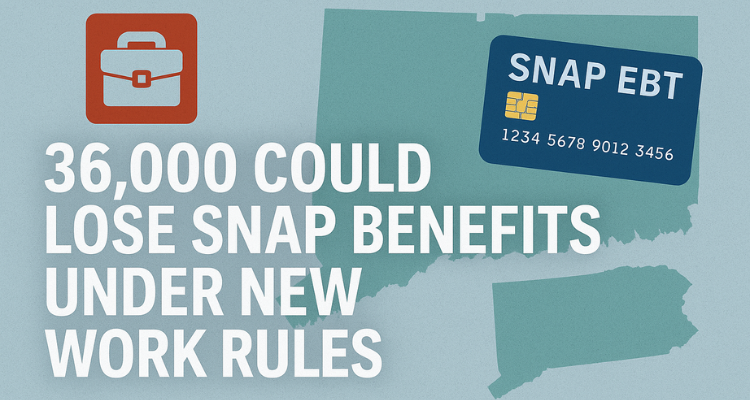Connecticut is facing changes that could bar tens of thousands of residents from food assistance. With the introduction of new work requirements and an uncertain federal funding outlook, access to the Supplemental Nutrition Assistance Program (SNAP) is at risk in the coming weeks.
Who’s At Risk?
Starting December 1, able-bodied adults aged 19-64 must meet at least 80 hours per month of employment, volunteering or training unless exempt. Groups potentially affected include:
- Veterans and people experiencing homelessness.
- Adults aged 55-64, previously exempt.
- Adults in households with children aged 14-18 (exemptions now only apply to households with children under 14).
- Residents in municipalities that once qualified for exemption due to unemployment; the threshold has been raised to >10% unemployment, eliminating exemption status for many.
Operational Impact & November Deposits
State agencies warn that, because of the federal government shutdown, there could be delays or suspensions of November SNAP deposits, and temporary limits on EBT usage if federal authorization is not renewed. October payments have been covered, but next month remains uncertain.
Program Scale in Connecticut
- 360,000 individuals receive SNAP in Connecticut across about 210,000 households in 169 municipalities.
- Annual SNAP expenditure is roughly $885 million (~$75 million per month) with an average around $190 per household.
Other Household-Level Changes
- About 15,600 non-citizen residents (permanent residents, refugees, certain visa holders) in Connecticut receive SNAP; around 3,000 could lose eligibility under the new rules.
- The Heat & Eat benefit linked to home heating included in SNAP faces cuts: many households may lose about $100 per month, though assistance remains for seniors or people with disabilities.
Administrative Costs & Error Penalties
- The cost-sharing for administrative expenses shifts from 50/50 to a structure with up to 75% state cost-share, adding tens of millions to Connecticut’s budget.
- If the error rate in payments exceeds 6%, states must co-finance benefits: 5% penalty for 6–7.99% error rate, 10% for 8–9.99%**, and 15% for 10% or more**. With an error rate near 8.7%, state’s exposure could be ~$88.5 million per year; under higher error scenarios, up to ~$132.7 million.
State’s Strategic Response
The executive and legislative branches are considering tapping part of the state surplus to temporarily support SNAP and WIC while federal funding remains stalled. They are also organizing informational hearings to identify funding gaps and coordinate response with other agencies.
What Recipients Should Do
- Check your EBT balance toward month-end and watch for official notices from your state Department of Social Services.
- Gather and keep proof of transactions (receipts, screenshots) to support potential claims.
- Prioritize essential purchases and verify whether you qualify for available exemptions from work requirements (health, caregiver status, etc.).
The state is walking a fine line between strengthening program oversight and ensuring households with limited income do not lose access to basic food support.
